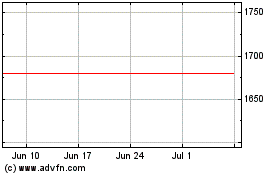By Joanna Stern
Three seconds. Three whole seconds of my undivided attention.
That's how long it takes me to unlock my iPhone when I'm wearing a
mask. Face ID fails, and there I am, punching in a passcode like
some Neanderthal.
Half a second. According to my trusty stopwatch, that's how
quickly I can unlock the new Samsung Galaxy S21, using its improved
in-screen fingerprint sensor.
Do you know what I could do with all that saved time?
Probably...nothing.
You would be forgiven if you completely missed Samsung's Galaxy
S21 launch a few weeks ago. There are no whiz bang features and you
might have been otherwise distracted. Yet the trio of new phones --
the Galaxy S21, Galaxy S21 Plus and Galaxy S21 Ultra -- are the
best Samsung has put out in years, and the best Android phones for
the money right now. The S21 starts at $799, down $200 from last
year's model.
It's what I like to call a Samsung refinement year. (For other
examples, see the Galaxy S8 and Galaxy S10.) The company has
polished and improved some of its best previously introduced
features, including the fingerprint sensor, the rapidly refreshing
120Hz screen and the 10X zoom lens on the S21 Ultra.
By no mere coincidence, those happen to be some of the very
features Apple is likely to incorporate into its next iPhones,
whether they're branded iPhone 12S, iPhone 13 or iPhone Super Max
Crazy Deluxe 2021.
Apple has been working on in-screen fingerprint technology and
has considered including both Touch ID and Face ID on the same
device, two former Apple employees told me. While they couldn't
confirm the company's plans, other reports, including one from
Bloomberg, say Apple is testing in-screen fingerprint sensors in
its next iPhone.
Apple declined to comment on its future products.
While there are additional industry reports pointing to Apple
adopting improved, faster OLED screens and an additional telephoto
camera, I can also point to a little something called...history. As
you'll see in the video above, I charted the last five years or so
in Apple following Samsung on hardware features -- and Samsung
following Apple.
There's a clear pattern: Samsung puts out the cutting edge
feature (e.g., water resistance, wireless charging, 5G
connectivity) as soon as it can -- by my estimates two to three
years ahead of Apple. Apple follows when it deems the technology
ready for the masses. When Apple beats Samsung to the market, it
tends to be with proprietary technology, such as AirPods or Face ID
-- or by removing features, such as the headphone jack.
"For people who love Samsung, there is no such thing as too
early," said Drew Blackard, vice president of product management at
Samsung Electronics America. He stresses the value the company gets
from the early-adopter feedback. They "help us refine what becomes
the product two years later."
And so it syncs up: Right around the time Samsung is refining
its earlier features -- as it did with the Galaxy S21 -- you can
trust that Apple usually isn't far behind with its own
variations.
In-Screen Fingerprint Sensor
The Galaxy S21's fingerprint sensor lives beneath the bottom
half of the screen. A fingerprint icon appears when needed, to show
you where to press. It's speedy and reliable, recognizing the sides
of my fingers and even just the lightest touch. It wasn't always
this way.
With the Galaxy S10 and S20, the technology was slower,
frequently returned error messages and failed with wet fingers. The
improvements are a result of Qualcomm's second-generation
ultrasonic fingerprint sensor. The sensor now covers a bigger
surface area, functions 50% faster, and captures more fingerprint
data in its scans, making it more accurate.
Qualcomm declined to say if Apple was another customer of its
ultrasonic technology.
A former Apple employee, who worked on Apple's Touch ID, said
the company had been working with optical sensors for in-screen
fingerprint reading. The person said optical sensing can be more
reliable than ultrasonic. Apple has filed various related patents
as early as 2014. A recent patent shows a fingerprint recognized
when placed anywhere on the screen. Apple declined to comment on
its patents.
The former employees stressed that whatever solution Apple went
with, it would have to meet the security standards of its current
Touch ID, which is still used on the iPhone SE, the iPad and
MacBooks.
120Hz OLED Displays
Please take your seats for Rudimentary Refresh Rate class. To
convey motion, all displays refresh a certain number of times per
second -- often 60. It's measured in hertz, so "60Hz." Since video
is generally 60 frames per second or less, this works for the most
part. But doubling the refresh rate to 120Hz can make some
animations appear even smoother, particularly scrolling and
transitions between menus. It can also reduce the latency when
writing with a stylus and improve some videogames, which can run
faster than 60 frames per second.
Can you really tell the difference unless you're comparing the
two side by side? Nope, but it's a nice-to-have. The biggest holdup
on the technology has been battery. Last year's Galaxy S20 had the
120Hz option but it was off by default because of battery drain.
With the Galaxy S21, it's on by default, with improved screen power
efficiency and new adaptive frame rates that adjust to what's on
the screen. On the Galaxy S21 Ultra, Samsung is using a new
lower-power 6.8-inch OLED screen that reduces power consumption by
16%, yet still has a crazy-high resolution.
There have been reports that Samsung, which regularly makes
iPhone components, will provide this type of display for the next
iPhones. Plus, Apple has already got the marketing lingo for it.
The iPad Pro's LCD screens have 120Hz refresh rates -- which it
calls "ProMotion."
The 2021 iPhone Pro models will have 120Hz displays, according
to Ming-Chi Kou, a TF International Securities analyst with a long
track record of accurately predicting future iPhone features. Apple
tested it in the iPhone 12, he says, but pulled it because of
battery and performance issues.
An Ultra Zoom Camera
Last year, I called the Galaxy S20 Ultra's "Space Zoom" -- which
could magnify photos digitally up to 100X -- a creep cam. This
year, the optical capability is even better. The Galaxy S21 Ultra
has four rear cameras, including one telephoto with 3X optical zoom
and another with 10X optical zoom.
Translation: Crazy-clear photos when you're standing crazy-far
away.
Is it still creepy? Sure is, but is it also useful when you're
trying to snap a photo of a deer off in the distance or your child
in the middle of the soccer field? Sure is.
Apple has been exploring greater telephoto magnification,
according to Mr. Kou, although he isn't sure of the timing. Apple
also has filed patents related to this, including one just this
week, which references a camera including "two light-folding
elements."
Zoom out and the picture is clear: Whether Apple is buying into
Samsung's technology or inventing its own, it's working to give
iPhones many of the features that Galaxy owners already have under
their thumb.
For more WSJ Technology analysis, reviews, advice and headlines,
sign up for our weekly newsletter.
Write to Joanna Stern at joanna.stern@wsj.com
(END) Dow Jones Newswires
January 29, 2021 09:53 ET (14:53 GMT)
Copyright (c) 2021 Dow Jones & Company, Inc.
Samsung Electronics (PK) (USOTC:SSNHZ)
Historical Stock Chart
From Dec 2024 to Jan 2025

Samsung Electronics (PK) (USOTC:SSNHZ)
Historical Stock Chart
From Jan 2024 to Jan 2025
